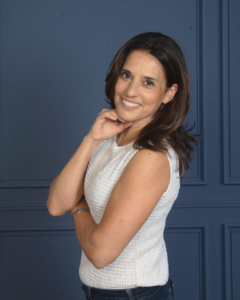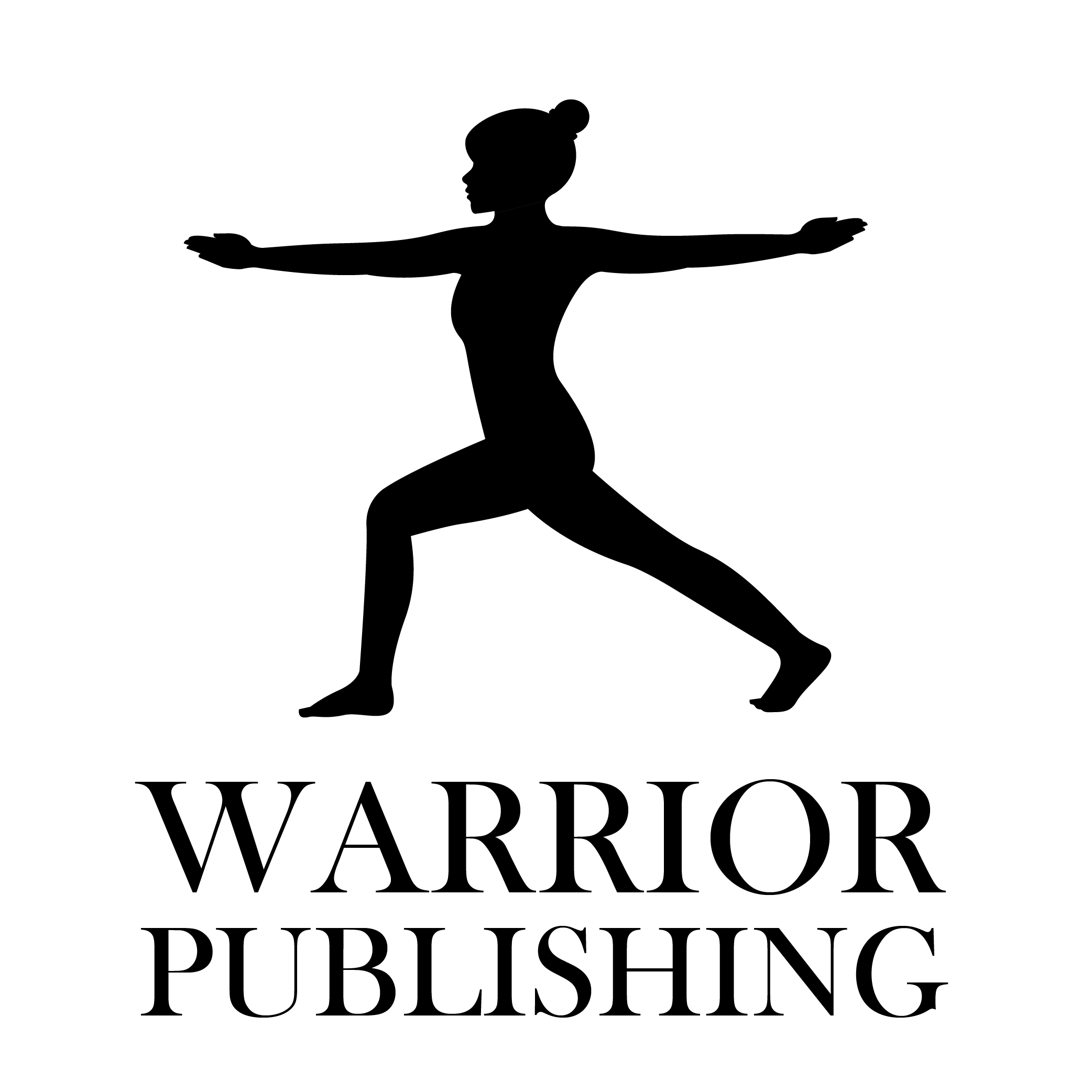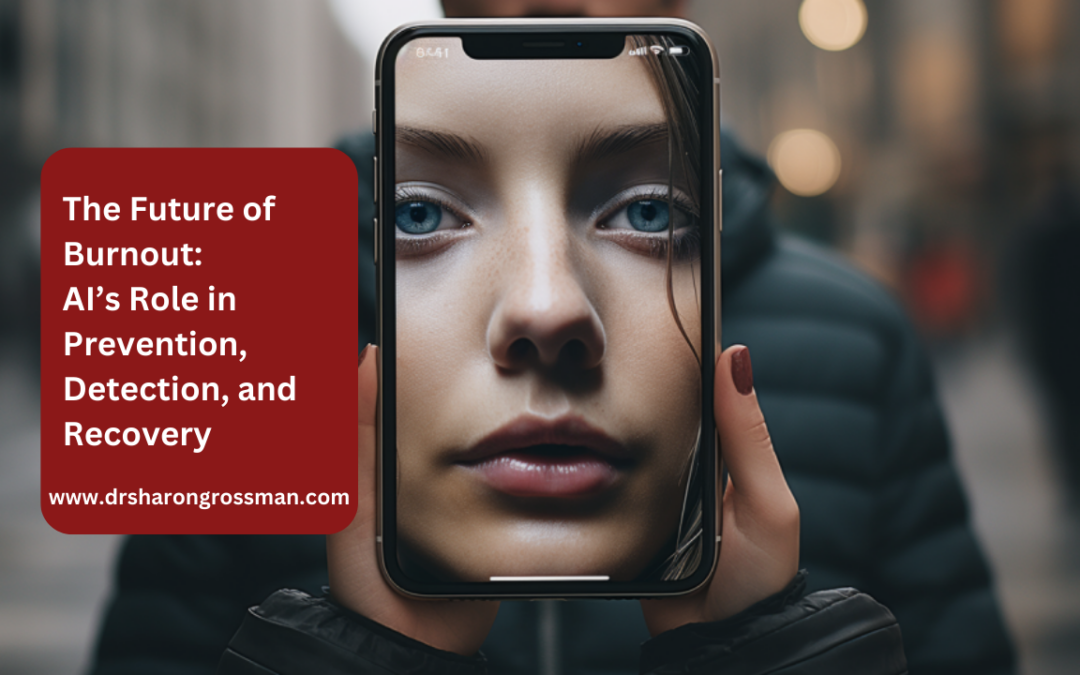Burnout is a phenomenon that transcends mere fatigue or stress, evolving into something far more sinister. Burnout, you see, is the silent assassin of ambition, productivity, and mental well-being, costing companies hundreds of billions of dollars in lost productivity, increased healthcare expenses, and turnover each year. It’s no surprise, then, that people are looking for answers.
The introduction and integration of Artificial Intelligence (AI) into our daily lives is what will, in part, shape the future of burnout. To explore the potential AI has on our ability to predict, detect, and recover from burnout, we’ll delve into the lives of three individuals who personify the distinct faces of this affliction.
Meet Jane, an overachiever who embodies the Thinker. Jane, driven by the relentless pursuit of perfection, finds herself entangled in a web of her own making. Every project, every task, every endeavor becomes a Herculean feat, weighed down by the unbearable burden of her expectations. She grapples with procrastination, as deadlines loom like ominous shadows over her life. The pile-up of unfinished projects becomes a monument to her perpetual overwhelm.
Mark, a perpetual people-pleaser who personifies the Feeler. Mark is a prisoner of his own empathy. Driven by a relentless desire to please others, he sacrifices his own well-being on the altar of guilt and obligation. Boundaries blur, and his sense of self becomes intertwined with the needs and responsibilities of those around him. The weight of unmet expectations bears down, leaving Mark feeling simultaneously resentful and trapped.
Lastly, there is Sarah, a relentless workaholic trapped in the cycle of constant doing, aptly named the Doer. Sarah who finds her self-worth tethered to her relentless productivity. She exists in a perpetual state of “doing,” believing that once the endless to-do list is vanquished, she will finally find the time for herself. Yet, she chases an elusive mirage known as the “Arrival Fallacy,” perpetually seeking a destination that never materializes.
This article explores burnout and its manifestations through the eyes of The Thinker, The Feeler, and The Doer. But more importantly, it ventures into the realm of hope and possibility through the lens of AI. As we delve deeper into the future of burnout and AI’s role in it, we will uncover innovative solutions to protect the mental well-being of individuals, foster healthier work environments, and usher in a new era of productivity and fulfillment.
Understanding Burnout: Symptoms and Manifestations
Burnout is not a one-size-fits-all problem. It shows up differently for everyone through a combination of early childhood experiences that shape us, current situational stressors, and our unique personality, which forms out burnout archetype.
For Jane, the Thinker, burnout manifests in peculiar ways. Physically, she feels the tension coiled tightly within her shoulders, a perpetual knot that refuses to unwind. Her nights are plagued by fitful sleep as her racing mind replays the day’s events and worries about tomorrow’s challenges. Emotionally, the pressure of her perfectionism weighs heavily, like an anchor sinking her deeper into the sea of self-doubt. Jane’s cognitive symptoms are equally pronounced, as she grapples with persistent procrastination and a growing pile-up of unfinished projects.
In the realm of the Feeler, Mark’s world is an emotional rollercoaster. His physical body carries the weight of his constant need to please others, manifesting in perpetual exhaustion. Emotionally, Mark oscillates between guilt, whenever he fails to meet the expectations of those around him, and resentment when he surrenders his boundaries to appease them. When in stress mode, he finds it increasingly difficult to differentiate between his responsibilities and those he has unwittingly taken on from others.
As we shift over to the Doer, Sarah, we witness a different facet of burnout. Her physical symptoms are the most pronounced of the three burnout archetypes because Doers tend not to listen to their bodies. They constantly push through, focusing on the to do list rather than their needs. This is a testament to their unending pursuit of productivity. Emotionally, Sarah’s self-worth is inexorably tied to her accomplishments, rendering her vulnerable to bouts of despair when she is unable to get to the finish line. Yes, she accomplishes plenty, but it never feels like enough. The Arrival Fallacy, the belief that relaxation will come when the work is done, haunts her every waking moment, leaving no room for respite.
What, then, are the modern triggers that have propelled burnout rates to alarming heights? The world around Jane, Mark, and Sarah is characterized by a relentless cacophony of demands. Remote work, touted as a panacea for the modern work-life balance, has often blurred the boundaries between the personal and professional. The home, once a sanctuary, is now an extension of the workplace, where the ceaseless ping of emails and the temptation to work around the clock are ever-present.
Mark, the Feeler, feels this acutely. His inability to say no has been exacerbated by the constant connectivity of the digital age. Whether it’s late-night requests from colleagues or weekend pleas for assistance from friends, the boundaries he so desperately needs have crumbled in the face of an ever-accessible world.
Sarah, the Doer, finds herself in a similar predicament. The digital leash of constant connectivity ensures that her inbox is a 24/7 battleground, where every ping adds to the mounting pressure. The lines between work and leisure blur, leaving her perpetually locked in a state of high-alert.
For Jane, the Thinker, remote work presents a different challenge. The absence of physical separation from her workplace means that her perfectionist tendencies know no bounds. The line between a completed project and endless tweaking becomes imperceptible in the virtual realm, trapping her in a never-ending cycle of self-imposed expectations.
AI’s Role in Burnout Prevention
Three of AI’s pivotal roles in burnout prevention lies in the realm of workload management, wellness check-ins, and personalized stress management recommendations.
Picture Jane, the Thinker, who is burdened by her relentless pursuit of perfectionism. AI steps in to inspect her work with precision, helping her reach her goal more quickly so she can refocus on the next item on her to-do list, preventing the overwhelming pile-up of projects that has long haunted her. Each day, it asks about her stress levels and offers suggestions on how to calm her anxious mind.
For Mark, the Feeler, AI becomes a compassionate guardian of boundaries. At the start of each week, AI looks over Mark’s calendar of commitments and spits out a report, identifying any time blocks he may have to take on additional requests from others. On days where his schedule is full, AI alerts Mark to this fact, serving as a reminder not to commit to anything additional. If Mark feels guilty, he can share his thoughts and feelings with his AI companion and get the support he needs to take a firm stand. AI is there to remind him that self-care is not selfish.
Sarah, the Doer, benefits from AI’s ability to recognize the signs of chronic overwork. When she pushes herself to the brink, AI steps in with timely reminders about the importance of rest and rejuvenation. When AI detects that she’s been sitting at her desk for too long, It prompts her to take breaks, reinforcing the notion that her self-worth is not tied solely to her productivity. AI knows that Sarah hasn’t taken her vacation days for over 18 months and prompts her to plan her next vacation.
Detecting Burnout with AI: Speech and Text Analysis
One of the biggest dilemmas related to burnout is that people often don’t recognize it happening until it’s too late. With AI, burnout detection will happen in real time, providing increased self-awareness to employees about their stress levels and what they need to do to halt burnout in its tracks. How will AI accomplish this? Two of the ways will include the analysis of speech and text.
Consider Jane, the Thinker, who meticulously crafts her emails and presentations. As burnout begins to take hold, AI notices a subtle shift in her communication patterns. Her once-engaging messages become laden with negativity, and her engagement dwindles. AI, like a trusted confidant, recognizes these changes and sounds the alarm. It prompts a conversation with Jane, offering support and resources to address the burnout that is slowly encroaching on her life.
For Mark, the Feeler, his texts and speech become a revealing mirror of his inner turmoil. AI detects the increased strain in his voice as he obliges others at the expense of his own well-being. It identifies the hesitancy in his messages, a sign of the emotional toll he bears. With compassion and precision, AI intervenes, initiating a dialogue with Mark about the importance of self-care and setting boundaries.
Sarah, the Doer, leaves breadcrumbs of her burnout in her digital interactions. As her productivity soars to unsustainable heights, her text messages and speech reveal a growing exhaustion, buried beneath a facade of efficiency. AI, acting as her silent advocate, recognizes the signs and reaches out to her. It offers guidance on achieving a healthier work-life balance and highlights the value of self-compassion.
In this AI-enhanced world, the ability to detect burnout early becomes a transformative force, ensuring that individuals like Jane, Mark, and Sarah are aware of the impact of stress on their minds, bodies, and productivity so they can take steps to slow down, rebalance, and work more strategically to prevent burnout.
AI’s Early Intervention for Burnout
When we are on the verge of burning out, we reveal this shift in ways that are often imperceptible to others around us. But AI can catch early glimpses of the change within us through it facial recognition capabilities and its analysis of microexpressions.
Within the subtle contours of our faces, AI discerns the silent cries for help—tiny, fleeting expressions of distress or fatigue that often escape the naked eye.
Imagine Jane sitting at her desk, lost in thought as she contemplates her unrelenting workload. Unbeknownst to her, AI observes the subtle changes in her facial expressions—a fleeting furrow of her brow, a hint of weariness in her eyes. These microexpressions reveal the inner turmoil she tries to conceal. AI, ever watchful, detects these signs and reaches out to offer assistance, a lifeline to prevent her descent into burnout’s abyss.
Mark’s face often betrays his emotional turmoil through microexpressions of guilt and frustration, even as he puts on a brave front. AI recognizes these telltale signs. It steps in with a supportive message, encouraging him to prioritize his well-being and guiding him toward healthier boundaries.
Sarah’s microexpressions often reveal the exhaustion that lurks beneath her relentless productivity. AI, with its keen eye, notices the subtle signs of fatigue and the faint traces of stress that etch across her face. It sends a gentle reminder that rest is not a sign of weakness but a necessity for her long-term well-being.
How AI Can Help in Burnout Recovery
We’ve already mentioned that AI can help prevent and detect burnout as it happens. But what if you are already burned out? How can AI help you recover in unique ways?
As it turns out, AI’s capabilities are so diverse that it can help you recover from burnout in a variety of ways including through behavioral pattern recognition, providing emotional support, and recommending personalized resources.
Consider Jane who often loses herself in her work, unable to discern where her professional life ends and her personal life begins. AI tracks her behavioral patterns meticulously, noting the prolonged work hours that have become her norm and the ever-decreasing productivity that accompanies her burnout. AI then offers Jane guidance to recalibrate her priorities.It listens as she pours out her anxieties and fears in an AI-driven chatbot conversation. It then sifts through a vast sea of resources and recommends articles on managing perfectionism, online courses that teach mindfulness practices, and relaxation techniques to alleviate stress.
When it comes to Mark, AI observes his tendency to put others’ needs before his own, leading to chronic overextension. It notices the patterns of decreased productivity and the moments when his work suffers as he grapples with burnout’s burden. AI offers Mark coping strategies to navigate the guilt and resentment that have plagued him. It suggests articles on setting healthy boundaries, courses on assertiveness, and relaxation techniques to ease the burden of guilt and resentment.
Sarah’s behavioral patterns reveal a relentless pursuit of productivity at the expense of her well-being. AI detects the sudden elevated heart rate, the shortness of breath, the lack of movement due to overworking.
When intervening, AI helps Sarah rediscover the joy of leisure. It curates a selection of case studies of people who burned out and rebuilt their career in a balanced way. In addition, AI finds her productivity courses that emphasize sustainable practices as well as relaxation techniques.
And when appropriate, AI presents Jane, Mark, and Sarah with a carefully curated list of therapists who specialize in burnout recovery and align with their unique needs.
Conclusion: AI’s Promise in Shaping the Future of Burnout
Burnout continues to be an expensive problem for individuals and companies, but artificial intelligence promises to reshape the future of burnout through prevention, detection, and recovery strategies. From Jane, the relentless Thinker, to Mark, the perpetual Feeler, and Sarah, the indefatigable Doer, we have witnessed AI’s transformative power in illuminating the path from exhaustion to resilience and well-being.
What is so powerful about AI is that it offers diverse and personalized solutions that provide individuals with awareness about their mental, emotional, and physical wellbeing, providing emotional support, coping strategies, and tailored resource recommendations as needed in real time.
From monitoring speech and text to analyzing microexpressions, behavioral patterns, and offering therapeutic chatbots—each aspect contributing to the holistic journey of burnout recovery.
The future of work lies not in the relentless pursuit of productivity at the expense of well-being but in a harmonious balance between professional achievement and mental health. This will benefit not only the employees, but the companies for which they work because by working sustainably, we will all be performing at our best for longer. And, if we love our work and our life, we will want to stay in the companies that offer an #IrresistibleWorkplace culture.
—————————-
Burned out? Let me coach you to go from Exhausted to Extraordinary.
—————————-
Do you want to get my Burnout Checklist for free?
I’ve created a checklist to help you identify signs of burnout and steps to take to get immediate results. Curious?
Click here to get the checklist.
—————————-
Read about the Future of Mental Health.
Author

Dr. Sharon Grossman, AKA the Burnout Doc, is a clinically trained psychologist and subject matter expert in burnout and mental health. Associations and Fortune 500 companies hire her to be their closing keynote speaker, to help their members and executives crack the code on burnout, and create custom-tailored solutions for recovery.
Over the past 20 years, Dr. Sharon has been helping high achievers who are struggling with anxiety, overwhelm, and burnout go from exhausted to extraordinary by better understanding how their brain works and how they can design and run their programming on purpose to live the kind of life they want to live. She is the author of several books on burnout and mindset and host of the Decode Your Burnout podcast. Through her speaking, training, and coaching, she helps organizations keep their top talent.


Recent Comments